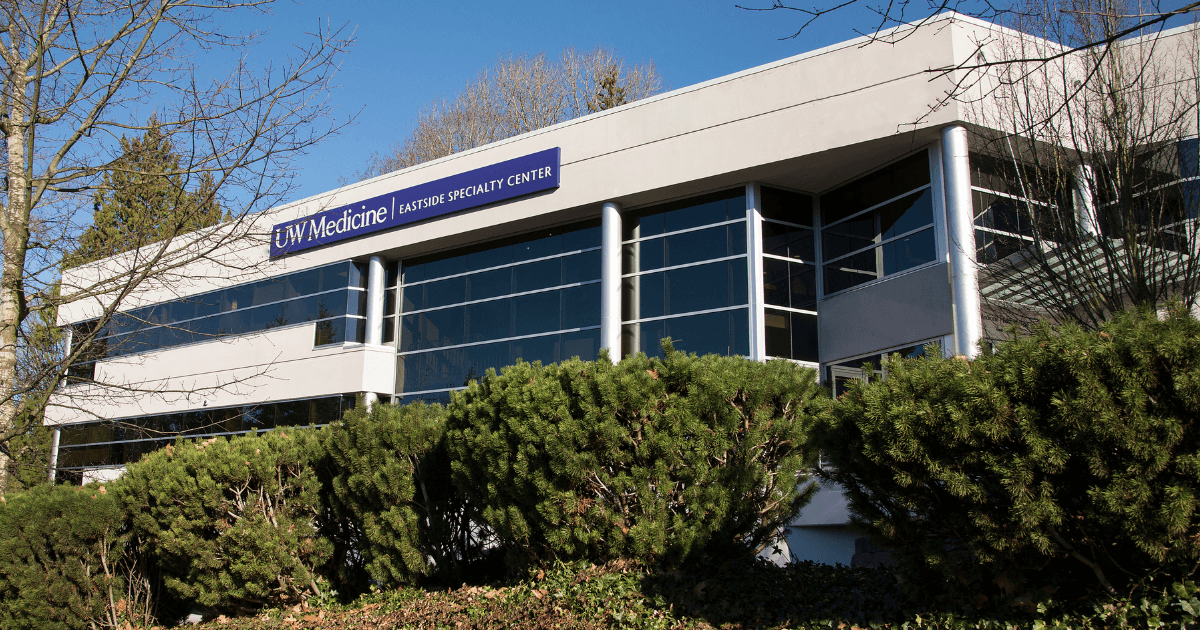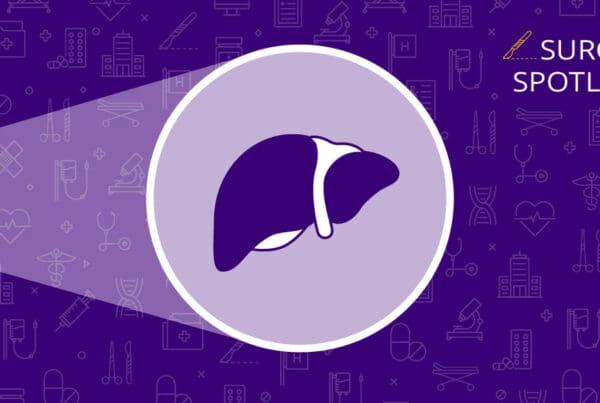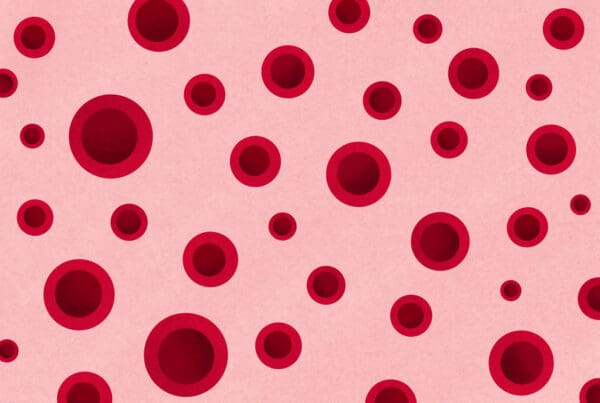Highlights | Marking a 10-year milestone
- On Feb. 24, 2024, the UW Medicine Eastside Specialty Center will be 10 years old.
- Located in Bellevue, the center serves patients in surrounding neighborhoods and beyond.
- The center provides over 17 specialty services, from colonoscopies to medication infusions and more.
The structure on Northup Way, once home to Microsoft, was like UW Medicine’s “Field of Dreams:” If you build it, they will come.
For a decade now, patients have come to the UW Medicine Eastside Specialty Center in Bellevue, traveling from neighborhoods nearby. Some even drive across Snoqualmie Pass and from as far north as Bellingham.
They show up for endoscopies and colonoscopies, minor outpatient surgeries, cardiac tests, radiology exams, medication infusions and a dozen other services. Many others opt instead for telehealth visits with the center’s clinicians, a capability that emerged with the COVID-19 pandemic.
On Feb. 24, the Eastside Specialty Center will be 10 years old.
“We wanted patients who lived on the Eastside to not have to travel to Montlake or Harborview to get their care. Our initial space over here, in Bellevue, was very small and inefficient — less than 9,000 square feet, with only a handful of specialty services. Now, we have 35,000 square feet and offer 17 specialties,” says Eugene Yang, MD, the center’s director.
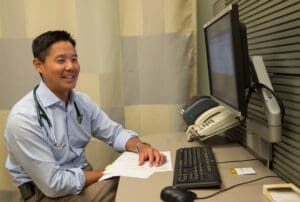
Eugene Yang at the Eastside Specialty Center.
Designed for collaboration and care
The center’s most distinct feature is its hub-and-spoke layout: In pods throughout the building, nurses and medical assistants are situated centrally (hubs) with patient rooms surrounding (spokes). Most arriving patients are handed an exam room number and map to guide themselves to the room, where they are met by clinicians who enter through a different door on the hub side.
At the time, that model was known to create efficiencies in primary-care clinics: Medical assistants didn’t need to do dozens of escorts a day from a waiting room to an exam room, and the centrally situated clinical staff members were readily able to cover each other’s tasks.
The hub-and-spoke model, however, was untested in specialty-care settings, where patients undergo varied complex procedures and exams.
“It’s been positive,” says Yang. “Even though team members’ jobs have less overlap; I’m thinking of a cardiology nurse who sits beside a urology nurse. But as I walk through the different pods, I can see that setup has helped to improve collaboration and communication. I think working in a shared space can help clinicians and staff build better relationships and help each other.”
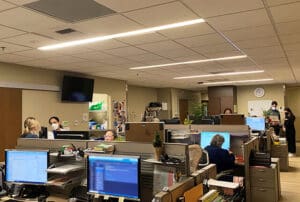
At the medical center, patient care pods have workspaces for clinicians and administrators (shown), which are bounded by sliding doors to exam rooms. Photo courtesy of Eugene Yang.
Expanding services and meeting patient needs
In 2014, its first year, the center facilitated about 30,000 patient visits. Last year, that number had grown to 63,000, Yang says.
One service that has grown to be the most used is radiology, says Yang. The center’s recently added imaging capabilities include mammography and DEXA (dual-energy X-ray absorptiometry) scans for bone density. Those augment X-ray, CT, MRI and ultrasound.
The center also has become a safety-net medical facility for uninsured and underinsured people on the Eastside, Yang says, helping a population who tends to seek care at Harborview Medical Center in Seattle. This helps load-balance the care that Harborview needs to provide as the county hospital.
“It’s been a transformative ten years, and I’m looking forward to the next decade of care and finding new ways to meet the needs of the people we serve,” says Yang.
